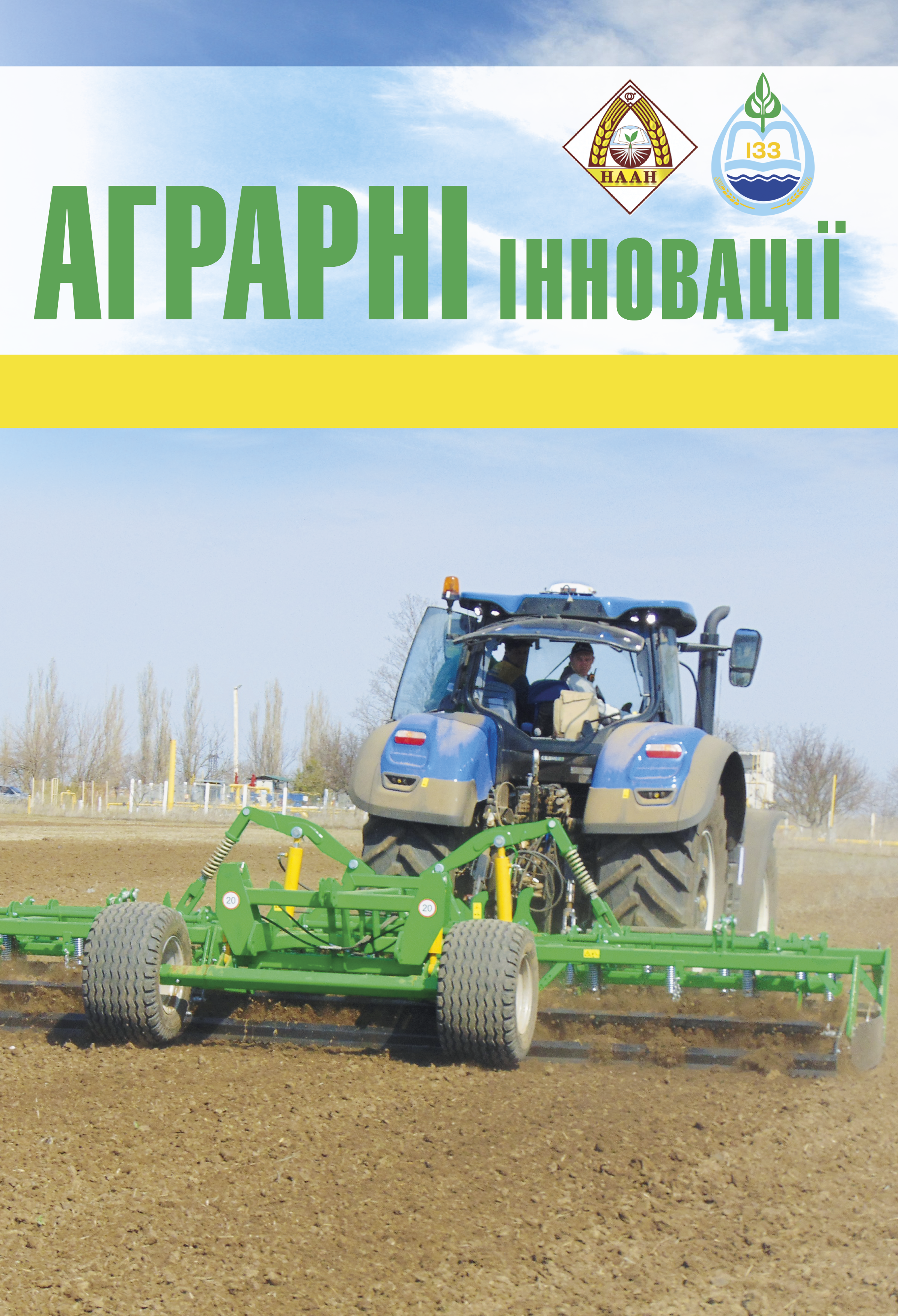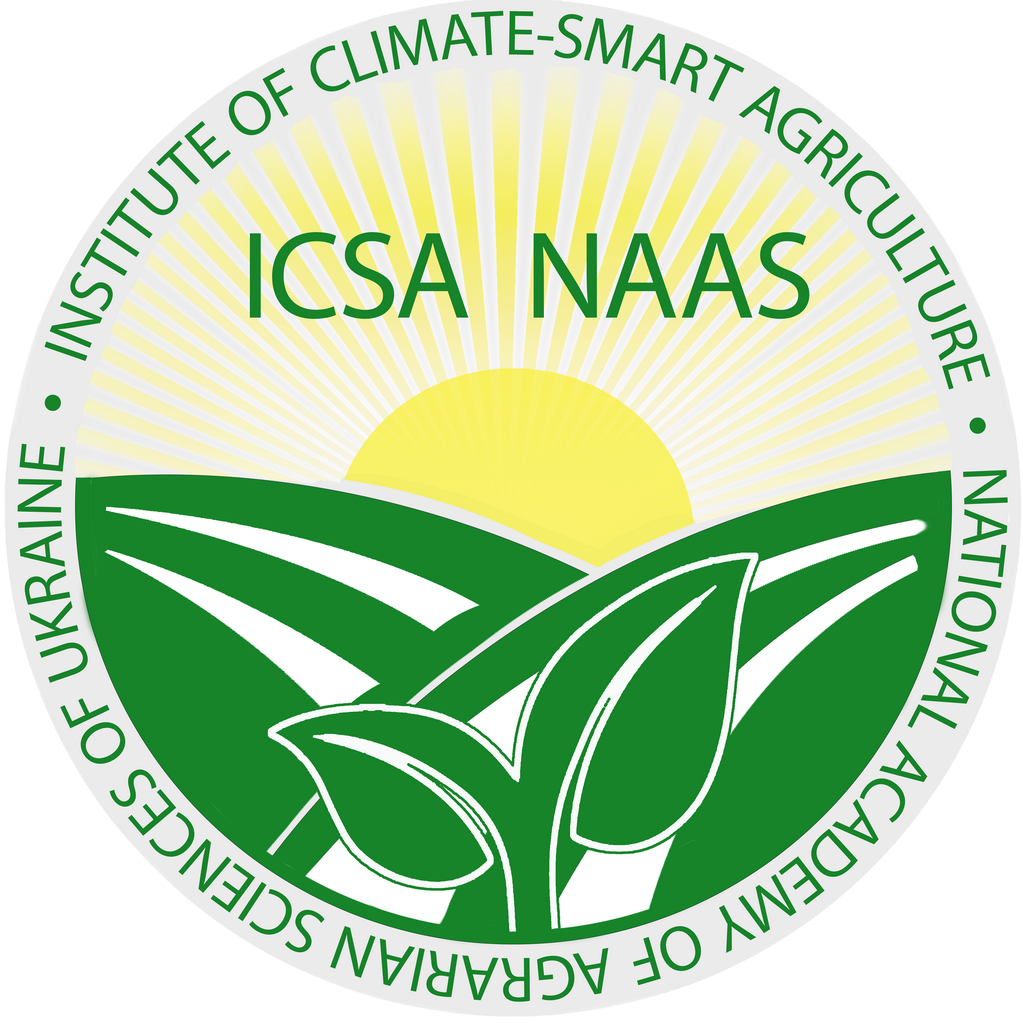Mathematical forecasting ecological and climatic situation in Ukraine in the context of global warming
Abstract
Purpose. To perform the analysis of current state and create predictive models of the development of the ecological and climatic situation in Ukraine until 2050, taking into account retrospective data for 1946-2021, to identify possible scenarios of climate aridification and to propose effective ways to mitigate the negative impact of climate change. Methods. To assess the ecological and climatic situation and forecast the development of climate aridity, the most complete meteorological database for Ukraine for the period 1946-2020 was used, supplemented with data for 2021, summarized by the weather hub https://meteopost. com/. In total, 6646776 precipitation data points were analyzed, as well as 13293552 temperature data points. Potential evapotranspiration was calculated according to Holdridge, the aridity index was estimated according to the generally accepted methodology in the edition of UNEP. The variance in meteorological indicators, the presence of a reliable trend, autocorrelation, and climate aridity forecasting were performed using the method of an autoregressive model with a moving average. Results. Reliable trends towards an increase in potential evapotranspiration have been established in the territory of Ukraine, which naturally follows from an increase in the average annual air temperatures. No statistically significant trend towards a change in the distribution of precipitation has been identified. As for the aridity index, by 2050 it will most likely gradually decrease, and therefore, the processes of climate aridification and desertification will intensify. The most effective measures to preserve the productivity of agroecosystems and ensure the food security of the state in new climatic realities are the introduction of scientifically substantiated ecological and resource-saving irrigation, considering the availability of water resources, the quality of irrigation water and the general condition of natural ecosystems. Conclusions. A statistically significant risk of a significant increase in climate aridity in Ukraine by 2050 has been established. Despite the relatively stable situation with precipitation, the rapid increase in air temperature and the associated increase in potential evapotranspiration cause high risks for desertification and degradation of natural and agricultural anthropogenic ecosystems, a decrease in arable land productivity, and a threat to food security. Ensuring ecological and climatic monitoring, auditing of natural resources, and rational restoration of irrigation as a factor in leveling the deficit of natural moisture are key prerequisites for the sustainable development of environmentally safe agriculture in Ukraine, as well as ensuring climate neutrality of the agro-industrial complex.
References
2. Janni M., Maestri E., Gullì M., Marmiroli M., Marmiroli N. Plant responses to climate change, how global warming may impact on food security: a critical review. Frontiers in Plant Science. 2024. Vol. 14. P. 1297569. DOI: 10.3389/fpls.2023.1297569
3. Baraka J. Effect of global warming on agricultural productivity. International Journal of Agriculture. 2023. Vol. 8(1). P. 21–30. DOI: 10.47604/ija.1971
4. Lykhovyd P. Theoretical bases of crop production on the reclaimed lands in the conditions of climate change. Warsaw : RS Global, 2022. 259 pp. DOI: DOI:10.31435/rsglobal/050
5. Заєць С. О., Вольвач О. В., Юзюк С. М. Агрокліматична оцінка впливу змін клімату на теплові ресурси території Північно-Західного Причорномор’я. Climate-Smart Agriculture: Science and Practice. Scientific monograph. ISMA ANNO 1994, 2023. С. 132–151. DOI: 10.30525/978-9934-26-389-7-7
6. Осадчий В. І. Кліматична програма України як основа цілісної екологічної політики держави в умовах зміни клімату. Вісник НАН України. 2021. Вип. 6. С. 81–84. DOI: 10.15407/visn2021.06.081
7. Lykhovyd P. V., Averchev O. V., Bidnyna I. O., Avercheva N. O., Nikitenko M. Evaluation of different methods for reference evapotranspiration assessment: A case study for Ukraine. Regulatory Mechanisms in Biosystems. 2024. Vol. 15(3). P. 441–445. DOI: 10.15421/022462
8. Бурикіна С. І., Цуркан О. І. Тенденції сучасної зміни агрокліматичної ситуації на території степової чорноземної зони Півдня України. Таврійський науковий вісник. 2020. Вип. 111. С. 29–43. DOI: 10.32851/2226-0099.2020.111.4
9. Szostek K., Mazur D., Drałus G., Kusznier J. Analysis of the Effectiveness of ARIMA, SARIMA, and SVR models in time series forecasting: A case study of wind farm energy production. Energies. 2024. Vol. 17(19). P. 4803. DOI: 10.3390/en17194803
10. Khan M. S., Islam M., Adhikary S., Hossain M. M., Afroja S. Analysis and predictions of seasonal affected weather variables of Bangladesh: SARIMA models vs. Traditional models. International Journal of Business and Management. 2018. Vol. 13(11). P. 70–80. DOI: 10.5539/ijbm.v13n12p70
11. Пічура В. І., Потравка Л. О., Рутта, О. В. Просторово-часовий аналіз і прогноз кліматичних змін в зоні Степу України. Екологічні науки. 2022. Вип. 6(45). С. 110–118. DOI: 10.32846/2306-9716/2022.eco.6-45.18
12. Кульбіда М. І., Барабаш М. Б., Єлістратова Л. О. Прогноз змін клімату України на початку ХХІ століття. Наукові записки Вінницького державного педагогічного університету імені Михайла Коцюбинського. Серія: Географія. 2011. Вип. 23. С. 10–17. DOI: 10.1080/10095020.2022.2100287
13. Гребенюк Н. П. Характеристика повторюваності сильних злив на території України в умовах сучасних змін клімату. Гідрологія, гідрохімія і гідроекологія. 2014. Вип. 1. С. 96–101.
14. Дудник А. В. Багаторічна динаміка популяцій і прогноз масового розмноження найпоширеніших шкідників пшениці озимої в Степу України. Агробіологія. 2011. Вип. 6. С. 37–41.
15. Лобода Н. С., Сербова З. Ф., Божок Ю. В. Оцінка впливу змін клімату на водні ресурси України на основі моделі» клімат-стік» за сценарієм глобального потепління А2. Гідрологія, гідрохімія і гідроекологія. 2015. Вип. 1(36). С. 8–17.
16. Osadchyi V., Skrynyk O., Palamarchuk L., Skrynyk O., Osypov V., Oshurok D., Sidenko V. Dataset of gridded time series of monthly air temperature (min, max, mean) and atmospheric precipitation for Ukraine covering the period of 1946–2020. Data in Brief. 2022. Vol. 44, 108553. DOI: 10.1016/j.dib.2022.108553
17. Вожегова Р. А., Лиховид П. В., Біляєва І. М., Лавренко С. О., Бойценюк Х. І. Модифікований метод хольдріджа для визначення евапотранспірації. Аграрні інновації. 2020. Вип. 3. С. 17–20. DOI: 10.32848/agrar.innov.2020.3.3
18. Zarei A. R., Mahmoudi M. R. Assessing the influence of PET calculation method on the characteristics of UNEP aridity index under different climatic conditions throughout Iran. Pure and Applied Geophysics. 2021. Vol. 178. P. 3179–3205. DOI: 10.1007/s00024-021-02786-z
19. Abdi H. Coefficient of variation. Encyclopedia of Research Design. 2010. Vol. 1. P. 169–171.
20. Lee D. K., In J., Lee S. Standard deviation and standard error of the mean. Korean Journal of Anesthesiology. 2015. Vol. 68(3). P. 220. DOI: 10.4097/kjae.2015.68.3.220
21. Barde M. P., Barde P. J. What to use to express the variability of data: Standard deviation or standard error of mean?. Perspectives in Clinical Research. 2021. Vol. 3(3). P. 113. DOI: 10.4103/2229-3485.100662
22. Bland J. M., Altman D. G. Statistics notes: measurement error. Bmj. 1996. Vol. 312(7047). P. 1654. DOI: 10.1136/bmj.312.7047.1654
23. Gocic M., Trajkovic S. Analysis of changes in meteorological variables using Mann-Kendall and Sen’s slope estimator statistical tests in Serbia. Global and Planetary Change. 2013. Vol. 100. P. 172–182. DOI: 10.1016/j.gloplacha.2012.10.014
24. Chen P., Niu A., Liu D., Jiang W., Ma B. Time series forecasting of temperatures using SARIMA: An example from Nanjing. IOP Conference Series: Materials Science and Engineering. 2018. Vol. 394(5). P. 052024. DOI: 10.1088/1757-899X/394/5/052024
25. Hyndman R. J. Forecasting: principles and practice. OTexts, 2018. 379 pp.
26. Dickey D. A., Fuller W. A. Distribution of the estimators for autoregressive time series with a unit root. Journal of the American Statistical Association. 1979. Vol. 74(366a). P. 427–431. DOI: 10.1080/01621459.1979.10482531
27. Willmott C. J., Matsuura K. On the use of dimensioned measures of error to evaluate the performance of spatial interpolators. International Journal of Geographical Information Science. 2006. Vol. 20(1). P. 89–102. DOI: 10.1080/13658810500286976






